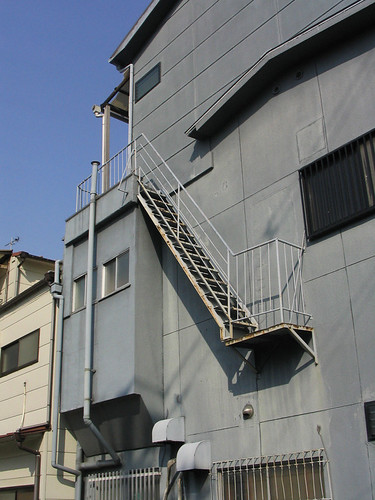Wow. It feels like there’s an entire novel just waiting to forth this, the most solipsistic headline Cory’s ever put on boingboing.
Remixable German documentary about me and Internet freedom [bb]
Author: greg
NYT’s Box Office Visualizer: The Ebb & Flow Of Movies
Not to get all Kottke about it, but I really like the NY Times’ infographic data visualization tool thing [is that an inexpert enough description for you?] that plots out the inflation-adjusted weekly domestic box office numbers of movies from 1986-a couple of weeks ago.
It’s fun to play with and interesting to watch in the same way the highly addictive Baby Name Wizard’s NameVoyager interface is.
Still, I think Ebb & Flow’s got some near misses in terms of usefulness. The tool’s big takeaways–that studios are relying more and more on blockbusters, that there are more films released, for much shorter runs–are best seen over the years, so a zoomout would’ve been nice. Also, a zoom in, since so many recent films are reduced to single, stubby lines.
And while I’m sure it was a decision based on the underlying value of the box office data–as provided by NYTimes Company subsidiary StudioSystems and Box Office Mojo–the details I want to click for are not a synopsis and a link to the Times’ review; it’s the box office numbers and the duration of the theatrical run for that particular film.
Also, Idiocracy isn’t in there. I wonder why, since despite Fox’s best efforts, the movie was technically released last year. [Note to self: next time I see Mike Judge, give him $20 for downloading the movie in a way that provided absolutely no financial benefit to the studio who killed it.]
The Ebb and Flow of Movies: Box Office Receipts 1986 – 2007 [nyt]
You Look Marvelous
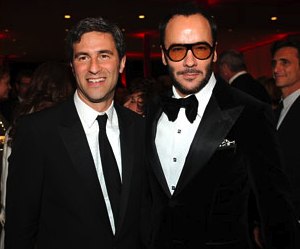
LACMA director Michael Govan and photographer Terry Richardson–who looks great, by the way, has he had work done?–at the opening of the Broad Contemporary Art Museum last week.
Broad and Butter [artforum]
Have you seen me? Beware the Jabberwock
Anyone know who made this rather sweet linoleum block print [I’m guessing, at first I thought it was woodblock] of the first stanza of the Jabberwock?
Those hands are awesome.
Meanwhile, In The American Pavilion…

Here’s a description of the American Pavilion at the Osaka ’70 Expo from an online exhibit at Columbia called, “Housing The Spectacle: The Emergence of America’s Domed Stadiums”:
Trying to best R. Buckminister Fuller’s Geodesic Dome built for the U.S. Pavilion at Expo 67 in Montreal, the architects of the Expo 70 Pavilion first envisioned it as a huge floating sphere, inspired by NASA’s Apollo 11 mission that put the first man on the moon. This spherical scheme was the winning entry (submitted by Davis – Brody Architects and deHarak, Chermayeff & Geismar, Designers) in a competition sponsored by its future owner, the United States Information Agency (USIA). The competition scheme would have included exhibition space inside the sphere, and used its inner surface as a giant projection screen for continuously played film clips. The Pavilion ultimately erected at Osaka marked the birth of a new structural building type — the longspan, cable stiffened pneumatic dome — which would for a time become the predominant roof system over America’s emerging sports palaces. Remarkably, the U.S. Pavilion’s pneumatically supported 465 foot by 265 foot clear span dome was developed largely in response to Congress’ 50% reduction in the project’s budget. The completed Pavilion cost $450,000, which was about half the cost of the Montreal dome.
Those budget cuts meant The Great Balloon was replaced by a flat, quilted dome derided as “the world’s largest bunion pad.”
“Space balloons” were a prominent element in another of designs invited by the US Information Agency. According to an exasperated-sounding 1968 Architectural Forum review of ten of the eleven invitees, Isamu Noguchi proposed an underground exhibition space topped by a “vividly colored” and contoured playground landscape, comfortably shaded by a giant balloon. A space balloon.
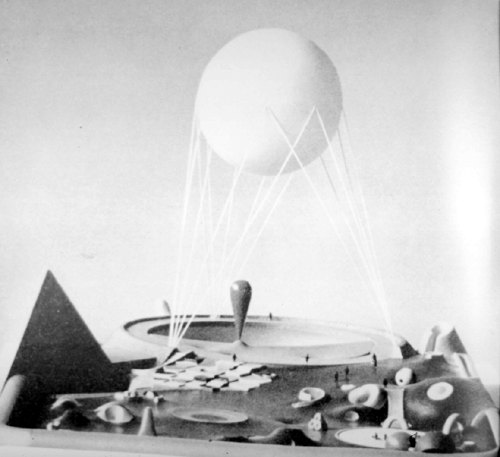
Davis Brody’s winning plan for the Great Balloon originally included a spiral exhibition-filled ramp leading up to a panoramic platform where films would be projected on the entire upper half of the dome.
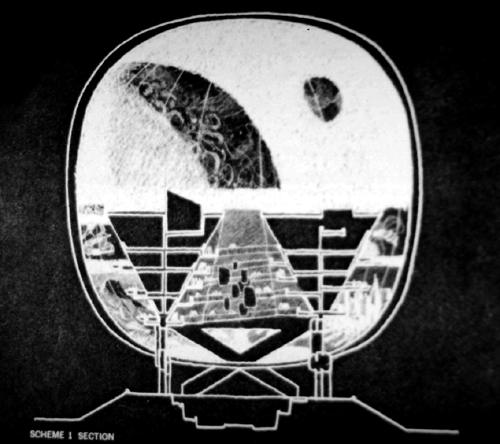
When that didn’t work out, the quest for giant, space exploration-evoking spheres, though, seems to have been moved inside. I can’t make much sense of the exhibition design or its purpose from photographs [the clearest picture I’ve seen so far is a tourist’s snapshot], but there were certainly some Project Echo-esque Mylar spheres floating in there.
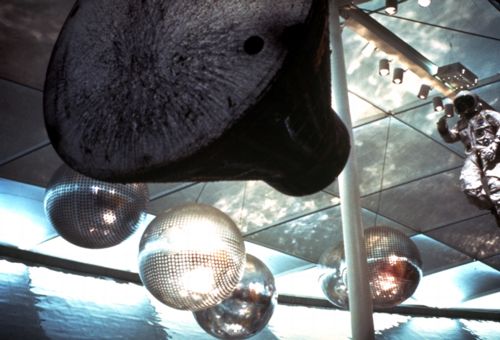
Also, the entire surface of the earth berm walls were covered in silver Mylar.
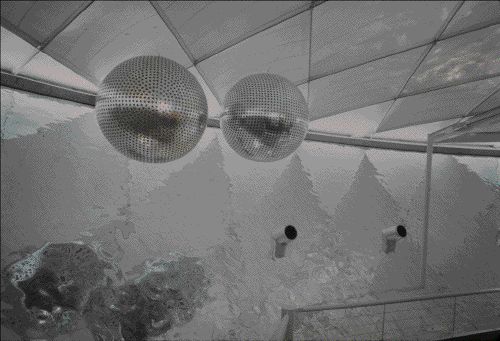
Especially with the dot-covered spheres, you see how short a trip it is from the Triumph of the Cold War and the Space Race to the Age of Disco.
There are more and larger images at the Columbia site. [columbia.edu]
The US at Osaka, Arch Forum, Oct. 1968 [hosted at columbia.edu]
Previously considered unrelated. Now? Helmut Lang’s self-portrait, a scavenged, battered disco ball
Q: Was The Pepsi Pavilion Art?
Of course, I’d only need to recreate The Pepsi Pavilion from Osaka 70 if it didn’t exist anymore. Does it? No. As relations between Pepsi and Billy Kluver, the engineer founder of E.A.T., deteriorated over issues of budget and esoteric programming [Pepsi had originally envisioned their dome-shaped pavilion as a site of a string of rock concerts to entertain The Pepsi Generation coming to the Expo], Kluver argued that the entire Pavilion was a work of art and thus, a success, and thus, worthy of continued expenditure and preservation. Pepsi, literally, wasn’t buying:
As an artistic experiment, though, it can be considered a success, and according to Klüver deserved to be treated as an art work.
In the case of the Pavilion, he therefore suggested to Pepsi-Cola to officially recognize the total work as an art work, in order to give it a legal structure. In a letter to Donald Kendall, President of Pepsi-Cola, Inc., he wrote “Our legal relationship to Pepsi Cola has developed so that the artists are put in the category of commercial artists designing a commercial product. One consequence of this is that we must obtain rights from all artists and engineers and others involved, particularly with regard to use of the Pavilion after Expo ’70. Of course, there is no question of Pepsi’s ownership and right to use and exhibit the Pavilion. Our dilemma is whether the artists have created a work of art or a work of commercial art to which there are rights which must be guaranteed… A decision to recognize the Pepsi Pavilion as a work of art and to treat it as such will set a much needed precedent in this area.” Pepsi-Cola never took this step and eventually the Pavilion was left in a state of gradual desolation and decay. This was certainly due to the fact that the relationship between E.A.T. and Pepsi-Cola had considerably cooled down, to the point that the company, the sole sponsor of the project, withdrew its support when E.A.T. presented a maintenance contract for $405,000, instead of the proposed sum of $185,000.
Too bad the strategy didn’t work; art seemed to be the only ticket to surviving the end of Expo 70. Today, almost all that’s left of Expo ’70 are Taro Okamoto’s massive sculpture, Tower of The Sun, and Kiyoshi Kawasaki’s International Art Pavilion, which until four years ago, housed the National Museum of Art, Osaka. Whoops, never mind: “The old museum was demolished and turned into a car park.”
From Ch. 2, “The Nine Evenings,” of M.J.M Bijvoets’ Art As Inquiry [stichting-mai.de]
No museums, but m-louis’s Expo70 photos do have sweet pavilions and the Tower of The Sun [flickr]
E.A.T. It Up: The Pepsi Pavilion
Let’s get one thing out of the way first: I’m a Diet Coke guy. The very fact that The Pepsi Generation existed in 1970 should blow a hole in their brand’s supposed youthy credibility big enough to drive a 90-foot mirrored dome though. Oh, and what do we have here?
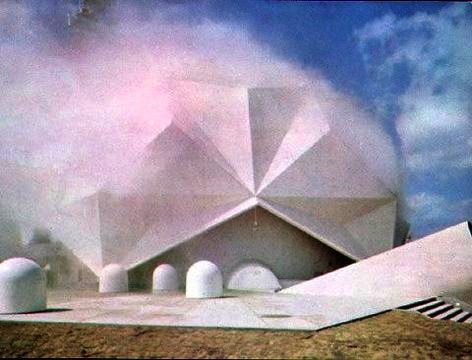
Holy freakin’ crap, why has no one told me The Pepsi Pavilion at the 1970 World Expo in Osaka was an origami rendition of a geodesic dome; obscured in a giant mist cloud produced by an all-encompassing capillary net; surrounded by Robert Breer’s motorized, minimalist pod sculptures; entered through an audio-responsive, 4-color laser show–yes, using actual, frickin’ lasers– and culminating in a 90-foot mirrored mylar dome, which hosted concerts, happenings, and some 2 million slightly disoriented Japanese visitors?
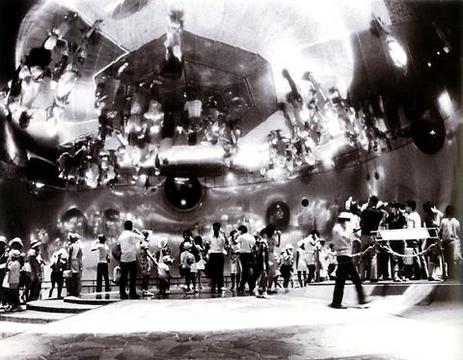
And that large chunks of it were conceived, developed, and programmed by E.A.T., Experiments in Art and Technology, the pioneering art/engineering collaborate founded by [among others] Robert Rauschenberg and Bell Labs’ Billy Kluver? And that the four artists working with Kluver–Breer, Frosty Myers, Robert Whitman, and David Tudor–had planned months of even freakier happenings for the Pavilion, but the Pepsi gave them the boot for being too freaky–and for going significantly over budget? Still.
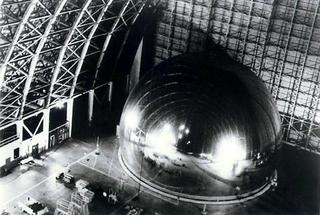
The least you could’ve done is tell me that Raven Industries made a full-size replica of the Pavilion out of Mylar and test-inflated it in a disused blimp hangar in Santa Ana, CA? Apparently, all it took was a 1/1,000th of an atmosphere difference in air pressure to keep the mirror inflated within the outer structure.
Because, of course, you know that Kluver was the guy at Bell Labs who helped Warhol with his seminal “Silver Flotations” exhibit in 1966 [seen here in Willard Maas’s film poem on Ubu]. And Bell Labs was involved in Project Echo, which launched and tracked two gigantic mylar spheres, satelloons, a couple of years earlier. Which makes the Pavilion’s similarities to the satellite below purely non-coincidental.
Which means that after recreating these two, earliest NASA missions as art projects, I’ll have to recreate the Pepsi Pavilion, too.
I’ve ordered by copy of Kluver et al’s dense-sounding 1972 catalogue, Pavilion and expect to be revisiting this topic in some depth within 5-7 business days. Meanwhile, if there are any other giant, mylar spheres of tremendous-yet-overlooked artistic and historical importance lurking out there, now’s your chance to come clean.
E.A.T. – Experiments in Art and Technology «Pepsi Pavilion for the Expo ’70» [mediaartnet.org]
Previously: Must. Find. The Satelloons Of Project Echo
D’oh, or else I must make the satelloons of Project Echo, which would mean I’m an artist, freak, or both
If You See Something, Eat Something
Saw this poster on the DC Metro recently, the unwarranted, grandiose arrogance of which has always bugged me.
Also, I have never seen a subway rat the size of a house cat in all my years. The size of a ferret, maybe. Or a chihuahua lying down. But not a cat.
Victoria’s Secrets Laid Bare
Cintra Wilson’s takedown of Victoria’s Secret in the NYT’s Critical Shopper column is more fun than a runwayful of pouty supermodels:
“Dream Angels,” according to Victoria’s propaganda, is America’s No. 1 fragrance, which makes sense in an obese nation with no self-control: it smells like an alcoholic Twinkie. In any case, shiny his and her gift boxes are an eyebrow-raising $69.
The lists of the beauty product names read like the erotic poetry of the loneliest admin in the office, a size-doesn’t-matter Ikea of sex fantasy–minus the meatballs.
Chug-a-Lugging Aphrodisiacs [nyt]
Best Gallery Press Release Of The Year, And It’s Only February
Now I’m probably biased because we’ve been longtime fans and collectors of Ruth Root’s work, but damned if this isn’t the most incredible press release for a gallery exhibition that you will see this year, last year, or next year:
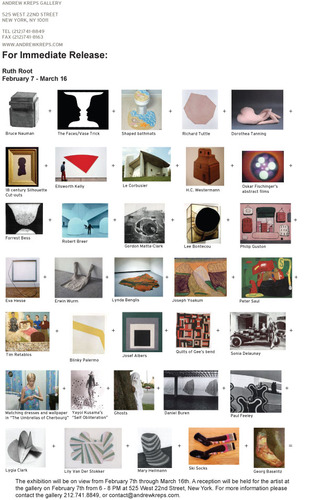
Click through to Kreps’ for the full size version.
Ruth Root, Feb 7 – Mar. 16 at Andrew Kreps Gallery [andrewkreps.com]
On Tomason, Or The Flipside Of Dame Architecture
Atelier Bow Wow is my favorite Japanese architecture firm. Rather than by building or proposing some kind of Roarkian vision, they first made a name for themselves [besides the catchy name they made for themselves, I mean] by observing and reporting architecture as it was inadvertently happening in Tokyo.
They put out exhaustively researched but in no way comprehensive books: Pet Architecture documented the ways structure took shape in the impossibly narrow spaces of a city where no scrap of land goes unused. Made in Toyko was about ridiculous hybrids: a department store with a driving school on the roof; a cement factory integrated with the workers’ dorms. They called these ridiculous, pragmatic spatial phenomena dame [dah-may] architecture, using the Japanese term for “no good.”
Such ad hoc, aggressively undesigned accidents stick in my mind as I read about Tomason [also spelled Thomason and Thomasson in English]. If dame architecture is the awkward result of relentless functionality, Tomason are the useless, abandoned leftovers. Stairs to nowhere are a favorite. Bricked up windows are a close second. Tomason are the flashings and detritus of the incessant churn of building, destruction, and redevelopment that characterizes the Japanese city. No clean slates here, no way.
The term comes from the art & architecture collective formed in 1986 known as Rojo Kansatsu [Roadside Observation], which counted the author/artist Akasegawa Genpei as a founding member. Rojo’s inspiration was Gary Thomasson, who was given the biggest contract ever in Japanese baseball in 1981-2, only it turned out he couldn’t hit; then he blew out his knee. He was a giant, useless lump on the bench.
Rojo exhibited at the Japanese pavilion at the Venice Biennale in 2006 [i.e., the architecture biennale, not the real one. heh], but I found out about Tomason from an essay on neojaponisme. Like everything there, it’s too long by design. The image below from neojaponisme, of a store shutter without a storefront, is from one of Akasegawa’s original books. It reminds me of some of the Powerless Structures sculptures by Elmgreen & Dragset.
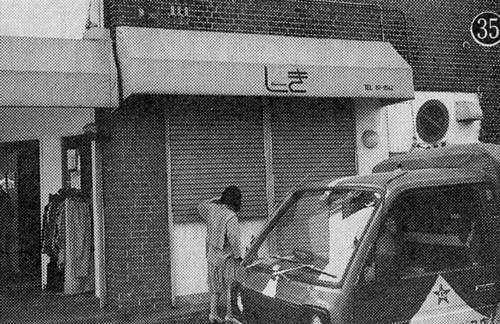
There’s also a rather nice photopool on flickr. here’s the japanese tomason tag and here’s the thomason group.
Roadside Observation [neojaponisme.com]
Copyright Murakami, Not A Derivative Work
Augur & Revok tagged a Takashi Murakami billboard in December. LA Weekly now reports that Murakami took the billboard down for his own collection.
Lemme Tell You A Story ‘Bout A Man Named Smithson
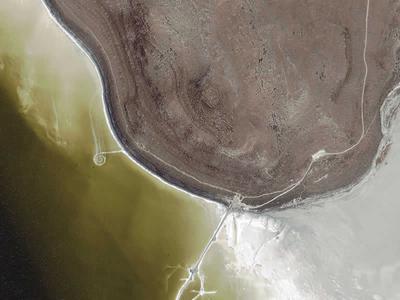
Score one for the bloggers. In the face of an instant, last-minute, blog-fueled burst of attention, the Utah Department of Oil, Gas & Mines has extended the public comment period until Feb. 13 for Application to Permit Drilling #08-8853, which seeks to conduct test drilling for oil in the West Rozel Field, an underwater oil deposit in Great Salt Lake.
The proposed drill sites are a couple of miles away from Rozel Point, the site of Robert Smithson’s Spiral Jetty. After a heads up from the Friends of The Great Salt Lake, Smithson’s widow and the executor of his estate, Nancy Holt, fired off email alerts to the art and media worlds, urging them to act “to save the beautiful, natural Utah environment around the Spiral Jetty from oil drilling.”
I dutifully fired off my letter, expressing my grave concern for the fate of “the single most important work of art in the state.” Apparently, at least a thousand other people around the world did, too, and in one day.
But something seems odd to me. What’s the actual threat, where does it come from, what’s the logical–and realistic–solution, and what do we know about what the artist himself would think about oil production nearby his masterpiece? Holt’s calling for protection of the Jetty’s “beautiful, natural” surroundings doesn’t exactly reflect the reality of the work. Likewise, Lynne deFreitag, the FOGSL chairwoman who raises the specter of “offshore equipment [that] could cause noise and visual impairment in a relatively pristine area.”
Now the National Trust of Historical Preservation has weighed in, calling the Spiral Jetty “a significant cultural site from the recent past, merging art, the environment, and the landscape.”
Rozel Point may be beautiful, but it is not pristine, and it’s not natural. And oil drilling is no stranger to the area, either. By ignoring the specific industrial history of the Spiral Jetty and its site, these defenses, however well-meaning or much-needed, are incomplete and inaccurate at best, and misleading at worst.
According to Smithson’s own accounts of the project, oil and oil production are inextricably linked to the Spiral Jettyand the reasons Smithson chose to build it at Rozel Point. A choice based on, among other resources, his consultation of his copy of the 1963 Utah Geological & Mineral Survey map titled, “Oil Seeps of Rozel Point.” [image: via Ron Graziani’s 2004 book, Robert Smithson and the American Landscape]
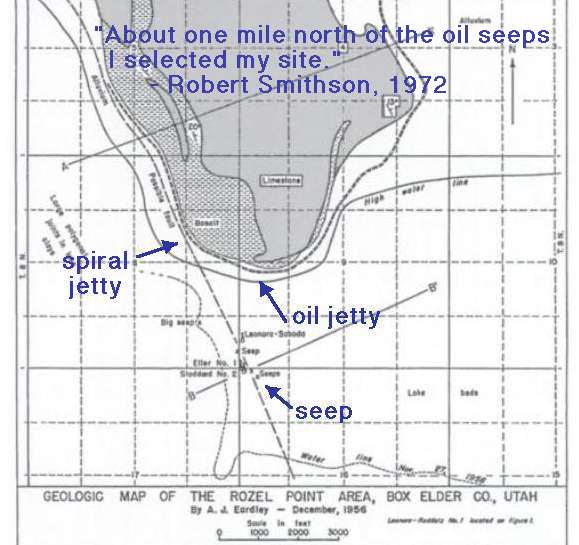
As he explained in a 1972 interview with Paul Cummings:
You might say my early preoccupation with the early civilizations of the West was a kind of a fascination with the coming and going of things…. And I became interested in kind of low profile landscapes, the quarry or the mining area which we call an entropic landscape, a kind of backwater or fringe area…
He continued, rather romantically, explaining the landscape of debris from decades of failed oil expeditions:
An expanse of salt flats bordered the lake, and caught in its sediment were countless bits of wreckage. The mere sight of the trapped fragments of junk and waste transported one into a world of modern pre-history…
Two dilapidated shacks looked over a tired group of oil rigs. A series of seeps of heavy black oil more like asphalt occur just south or Rozel Point. For forty or more years people have tried to get oil out of this natural tar pool. Pumps coated with black stickiness ruted in the corrosive salt air. A hut mounted on pilings could have been the habitation of “the missing link.” A great pleasure arose from seeing all those incoherent structures. This site gave evidence of a succession of man-made systems mired in abandoned hopes.
About one mile north of the oil seeps I selected my site.
[In 2005, the state decided to clear out all these ruins and debris using money from the Division of Oil, Gas & Mining’s “orphan well” fund. “Within 16 days,” brags the Utah Geological Survey website, “a total of eighteen 40- cubic-yard dumpsters full of junk were hauled away! Only some old wood pilings and historic stone building foundations were left behind…So, if you have ventured to the area before, either to see Rozel Point or Spiral Jetty, you may not recognize it when you return!” [emphasis added]
Interesting that to the state, wood pilings and stone foundations are “historic,” but the metal/industrial elements were “junk.” It’s a diametrically opposite view from the artist’s own.
Even though the “Diluvian” ruins of failed oil drilling were central to the choice of Rozel Point, and even though he built his own Jetty right next to an abandoned oil drilling jetty, the industrial nature of the site was largely omitted from critical discussion of the Spiral Jetty for decades while it lay submerged and unvisited.
During the 2004 retrospective at the Whitney, Todd Gibson noticed how Smithson largely excluded the surroundings from the Spiral Jetty film:
This is interesting because Smithson could just as easily have chosen to place Spiral Jetty within the context of the industrial landscape in which he built it. At two points during the film, viewers get a passing, background glimpse of the oil-drilling jetty situated less than half a mile to the east. You have to be watching for it to see it, the shots are so quick. (See the satellite photo at right for an indication of how close these two jetties are–and by how much the industrial jetty dwarfs Smithson’s work.)
I was surprised by these two shots in the film because they both show not just the oil drilling jetty that remains at the site today, but they also clearly show a giant drilling derrick at the end of the jetty that is no longer there. The site was even more clearly a working industrial landscape at the time Smithson built his piece than it is today, but Smithson chose not to highlight that fact in the film–even though his Non-site works had explored the concept of the industrial, entropic landscape a few years before.
It’s only been in the last few years, since Spiral Jetty reemerged from the water and people started visiting the site again, that discussion of this aspect of the work has arisen.
It’s too late, and this is too long already, so I’ll have to look into the questions of the current oil drilling situation in another post. Meanwhile, don’t forget to write your letter of support for the Jetty! Demand that the state restore the 18 trailerloads of pumps and junk immediately!
Clean Flix In The Front, Underage Porn Party In The Back
Daniel Thompson, the guy behind Clean Flix, [1], Flix Club, an Orem, Utah video store that, like Clean Flicks before it, edited sex, nudity, and swearing scenes from Hollywood movies, has been arrested for paying for sex with 14-year-old girls.
One of the girls’ moms found the $20 bill and asked where it had come from.
The booking documents state Thompson told the 14-year-olds that his film sanitizing business was a cover for a pornography studio. He asked the girls if they would participate in making a porn movie, but they refused, the documents state.
Police found a “large quantity” of pornographic movies inside the business, along with a keg of beer, painkillers and two cameras hooked up to a television. Thompson told police he didn’t know the teenagers were under 18 or that they were paid for sex. He said pornography found at the business was for “personal use,” according to the documents.
Reminds me of the hypocritical conservative zealot who was outraged at the occasional nudity in the foreign films shown at BYU’s International Cinema program. He demanded that he be allowed to screen and edit out all the smut himself.
[1] update: oh wait, the place is just some me-too outfit called Flix Club, not the original Clean Flicks. I thought 31 was too young to have been starting businesses based on the single nude scene in Titanic.
update update: alright, Clean Flicks connection re-established. The Provo Daily Herald explains that Thompson was a Clean Flicks dealer until that company went out of business. Then he re-opened under the new Flix Club name, until he was closed down last year in a separate court ruling.
Former sanitizer of rental movies is accused of paying teens for sex [sltrib via thr]
Clean-film business was front for porn, police say [heraldextra.com]
Previously: nude scenes at BYU
And In Further Platinum Rhomboid Tessellation News…
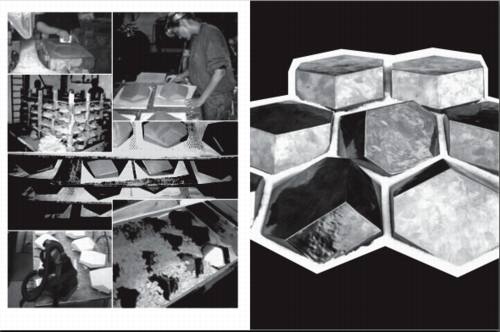
At the risk of devolving into an Olafur fanboi site, I’ll mention that I was flipping through Take Your Time, the photodocumentary magazine published by the studio in November. Turns out there are multiple shots of the making of for the quasi-brick tile installation in Tadao Ando’s Yu-un house project for Japanese collector Takeo Obayashi.
Here are some much-reduced screenshots from the PDF version. It’s one of the remarkable things of Take Your Time, glimpsing the extent and diversity of the indsutrial/production processes which generate Eliasson’s art objects. Outsourcing fabrication is so commonplace these days in the art world, but Olafur’s approach is the diametric opposite. He develops these highly specialized production capabilities for what’s essentially a very-low volume factory. The R&D’ll kill you, but the gross margins on those tiles has to be phenomenal.
Above: In-house production and packing of the tiles.
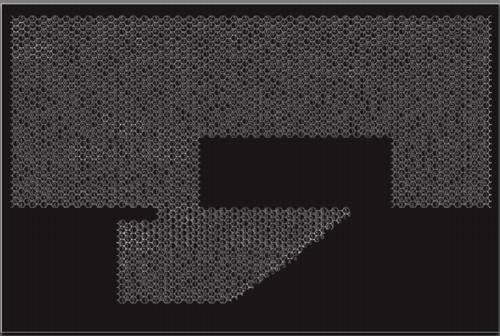
The installation template described by one of Eliasson Studio’s architects, which incorporates randomly generated position instructions applied to the AutoCAD diagram:
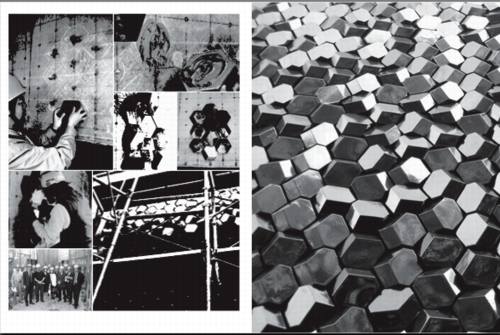
Construction crews installing the tiles in Tokyo [l] and the finished wall [r]
Previously: And what do you do, Mr. Ando?
Olafur: the Magazine??



